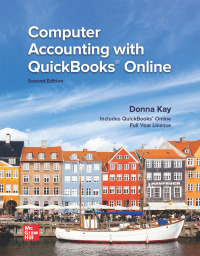Question
Medieval Adventures Company was founded by Aaron Reinholz to produce a game marketed under the name Castles and Unicorns. Each Castles and Unicorns cost the
Medieval Adventures Company was founded by Aaron Reinholz to produce a game marketed under the name Castles and Unicorns. Each Castles and Unicorns cost the company $35 to produce. In addition to these production costs that varied in direct proportion to volume (so-called variable costs), the company also incurred $10,000 monthly being in business costs (so-called fixed costs) irrespective of the months volume. The company sold its product for $55 each.
As of December 31, Reinholz had been producing Castles and Unicorns for three months using rented facilities. The balance sheet on that date was as follows:

Reinholz was very pleased to be operating at a profit in such a short time. December sales had been 750 units, up from 500 in November, enough to report a profit for the month and to eliminate the deficit accumulated in October and November. Sales were expected to be 1,000 units in January, and Reinholzs projections showed sales increases of 500 units per month after that. Thus, by May monthly sales were expected to be 3,000 units. By September that figure would be 5,000 units.
Reinholz was very conscious of developing good sales channel relationships in order to increase sales, so Castles and Unicorns deliveries were always prompt. This required production schedules 30 days in advance of predicted sales. For example, Medieval Adventures had produced 1,000 Castles and Unicorns in December for January sales, and would produce 1,500 in January for Februarys demand. The company billed its customers with stated terms of 30 days net, but did not strictly enforce these credit terms with the result that customers seemed to be taking an additional month to pay. All of the companys costs were paid in cash in the month in which they were incurred.
Reinholzs predictions came true. By March, sales had reached 2,000 Castles and Unicorns, and 2,500 units were produced in March for April sale. Total profit for the year by March 31 had reached $60,000. In order to get a respite from the increasingly hectic activities of running the business, in mid-April Rein- holz went on a family vacation.
Within the week, the companys bookkeeper called. Medieval Adventures bank balance was almost zero, so necessary materials could not be purchased. Unless Reinholz returned immediately to raise more cash, the entire operation would have to shut down within a few days.
Questions:
1. Prepare monthly income statements, balance sheets, and cash budgets based on sales increases of 500 units per month and 30-day advance production for January through September. When will the company need extra funds? How much will be needed? When can a short-term loan to cover the need be repaid?
2. How is it possible that a company starts with $250,000 in capital and has profitable sales for a period of six months and still ends up with a zero bank balance? Why did Medieval Adventures need money in April? How could this need have been avoided?
3. From your calculations and financial statements for Question 1, derive cash flow statements for the months of March, May, and July from each months beginning and ending balance sheets and income statement. Compare these derived cash flow state- ments with the cash budgets prepared directly in Question 1.
MEDIEVAL ADVENTURES COMPANY Balance Sheet As of December 31 Assets Cash Accounts receivable Inventory $146,250 68,750 35,000 $250,000 Equities Common stock Retained earnings $250,000 0 $250,000Step by Step Solution
There are 3 Steps involved in it
Step: 1

Get Instant Access to Expert-Tailored Solutions
See step-by-step solutions with expert insights and AI powered tools for academic success
Step: 2

Step: 3

Ace Your Homework with AI
Get the answers you need in no time with our AI-driven, step-by-step assistance
Get Started


